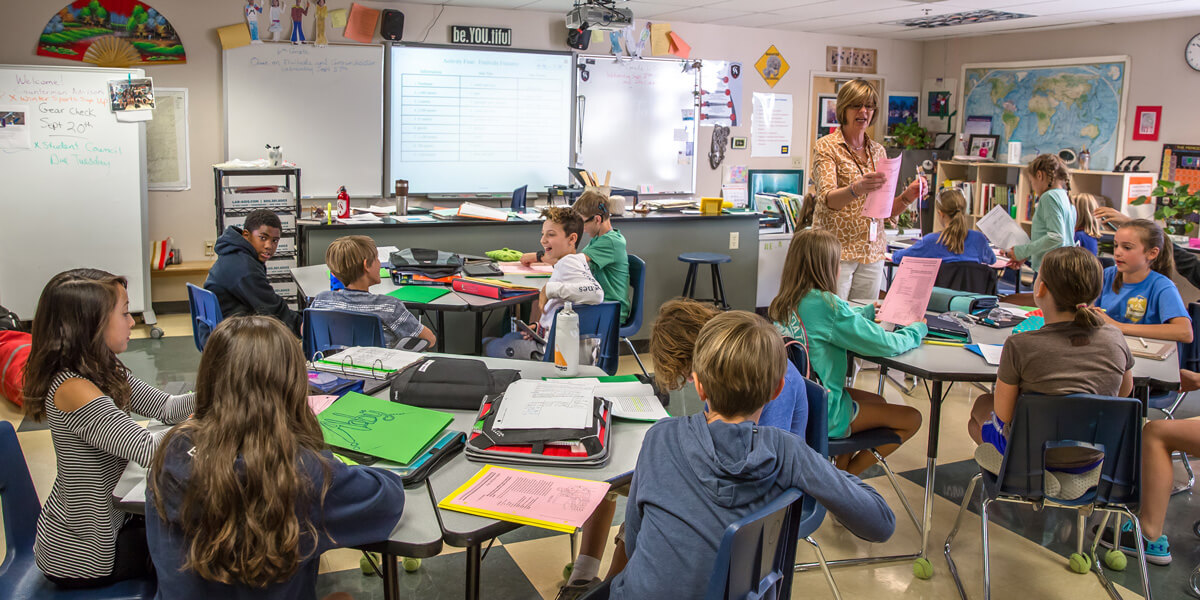By the time May rolls around, Colorado Academy Middle School students know the routine well. They understand school expectations and are used to being challenged in class, on homework, and with assessments. They are certainly looking ahead to summer, but for the most part are shouldering the many responsibilities associated with a rigorous academic program. Each class by this point in the year has covered (uncovered?) a significant amount of territory—new concepts, perspectives, and study skills. With June looming, teachers are focused on culminating experiences for both individual students and the class.
“Culminating a course of study” can bring to mind a cumulative assessment, one in which students cram many hours and try to second guess, sometimes with surprising accuracy, what it is the teacher values and will put on the exam. Traditionally, the exam is some combination of short answer, fill in the blank, and short essay, with students doing their darndest to demonstrate that they learned exactly what it is that the teacher wants.
That is not a terrible exercise, but perhaps it is not the most useful for students in 2019. Study after study indicates that this kind of paper-and-pencil test, complete with hurried memorization, does not lead to the best long-term outcomes. Because the information students studied was not stored in long-term memory, the “half-life” of these facts is short; six months later, the average student is lucky to remember 10 to 20 percent of the target information.
The end of the year at CA
While there is still the occasional recall assessment given as a component of the review experience, most classes finish with one form or another of a culminating activity. These activities are intended to give students an opportunity to synthesize information or practice the type of thinking that a historian, writer, or mathematician might pursue. They tend to be iterations of practice in real-world problem solving or a chance for students to explore more deeply a concept in the field. Many of the culminating activities involve demonstrating the ability to work collaboratively, since we believe this is an essential skill.
Eighth Grade Capstone
Perhaps the quintessential example of a culminating project at CA is at the end of Eighth Grade. We take the last four full days of school and ask students to complete a Capstone Project. Each of the projects is different, but all are designed to have the following features in common. Each Capstone asks students to:
- Solve a real-world problem
- Work with outside-of-school experts in a field
- Collaborate
- Learn a new perspective
- Create a solution or final project
- Demonstrate learning—often a creation or presentation of some sort
Examples of recent Capstone projects include:
- Working with architects to repurpose a school building
- Working with inventors to create an innovative product and then “sell” it to a panel of investment bankers
- Working with a professional director to write, block, and stage a performance in four days
- Learning from celebrated lawyers how to argue a case in court and then doing so
- Working with outdoor professionals and the school administration to design a new Interim
Because we know that students work harder, learn more, and have more fun when they have some choice over what they study/learn, we give our Eighth Graders the opportunity to prioritize their choices of which Capstone to join.
The end game
When all is said and done, we cannot predict what profession or field of study each of our young people will pursue. What we do know, however, is that being an able collaborator and skilled learner will be essential to their success. In this sense, we choose to culminate the year by giving our students the opportunity to demonstrate these skills in as real-world a setting as we can provide, believing that the more practice we give our students, the more their abilities will grow.
